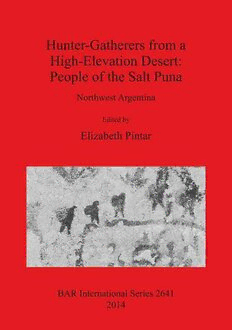
Hunter-Gatherers from a High-Elevation Desert: People of the Salt Puna: Northwest Argentina PDF
229 Pages·2014·17.514 MB·Spanish
Most books are stored in the elastic cloud where traffic is expensive. For this reason, we have a limit on daily download.
Preview Hunter-Gatherers from a High-Elevation Desert: People of the Salt Puna: Northwest Argentina
Description:
This book synthesizes the last 25 years of research on the prehistoric inhabitants of an intermontane basin located at elevations above 11,000 ft. This research is centered in the region of Antofagasta de la Sierra, which has yielded stimulating data on human occupations and paleoenvironmental conditions during the Pleistocene/Holocene boundary and continuously throughout the Holocene, including the very arid Middle Holocene —a time when the Atacama Desert to the west and the North Puna witnessed low intensity human occupations. The archaeological studies presented in this volume take on different aspects of human adaptation, from the earliest hunter-gatherers in the region to the transition toward food producing societies. Authors examine animal bones and fleece fibres, macro and micro-botanical remains, chipped and ground stone tools, and human burials from exceptionally well-preserved contexts in remarkable stratigraphic sequences from several rock-shelters, and discuss the relevance of their resultsin relation to hunter-gatherer settlement, subsistence and mobility strategies. This book aims at presenting the research to non-Spanish speaking audiences and at promoting a dialogue between archaeologists who study hunter-gatherers in deserts around the world. It is hoped that the research will contribute to a better understanding of the wide array of human adaptations in South America as well as to high altitude environments.
See more
The list of books you might like
Most books are stored in the elastic cloud where traffic is expensive. For this reason, we have a limit on daily download.
